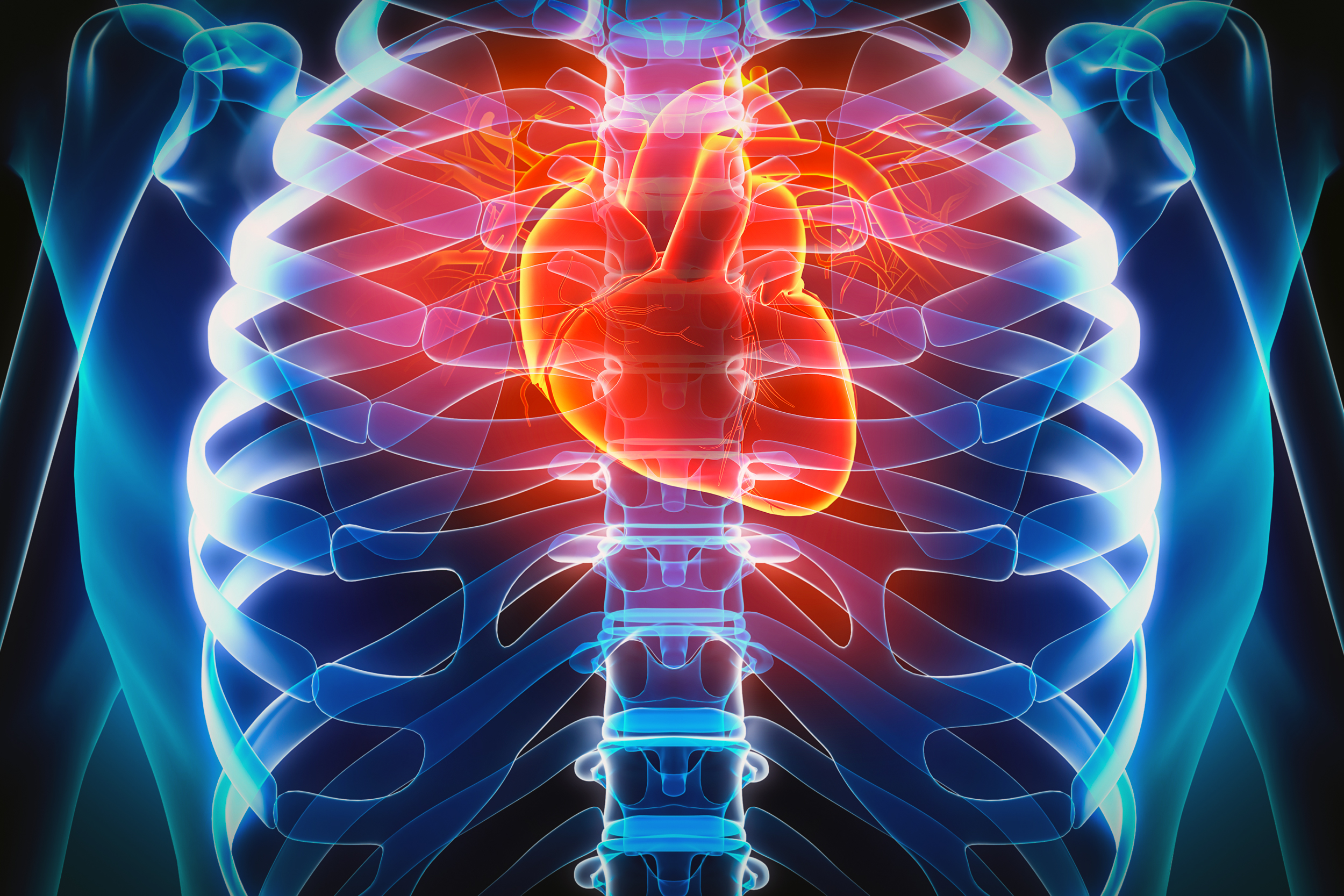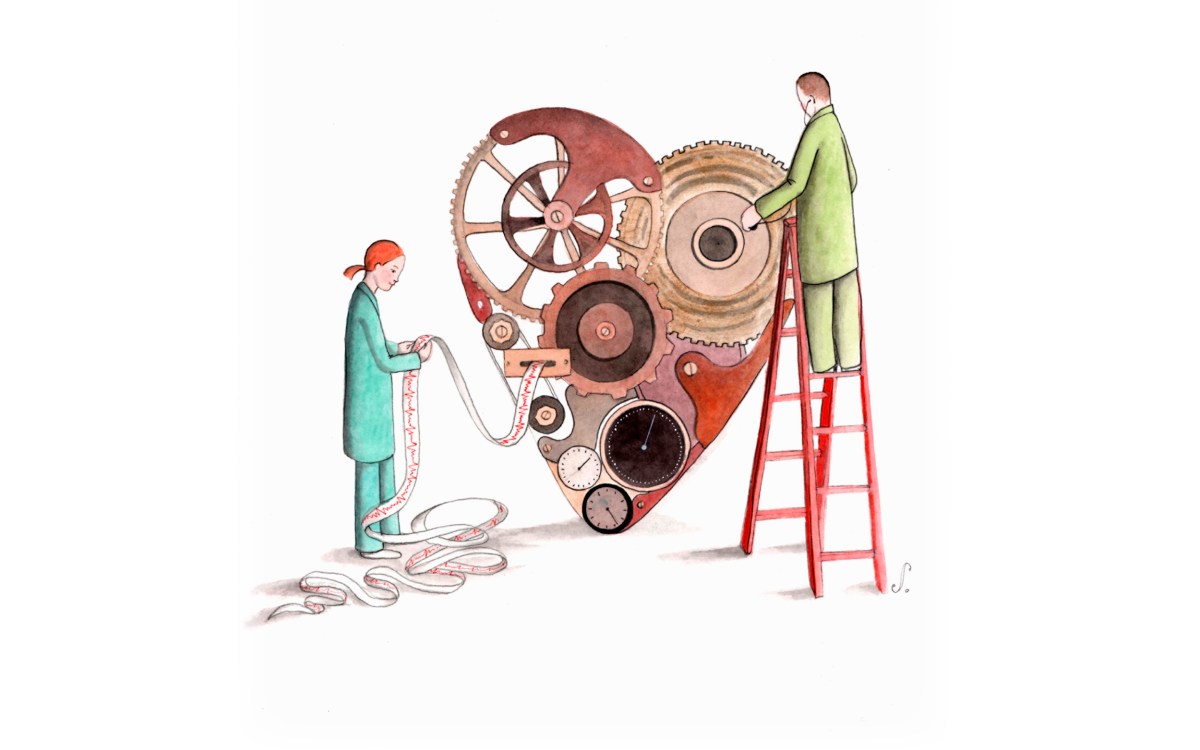
When heartbreak kills, blame the amygdala
The attack might feel sudden, but history of stress is a key factor in syndrome, experts say
Is it possible that your broken heart starts in your head?
Harvard and Mass General scientists have been studying heart-brain connections for years, illuminating one of the most extreme — and potentially deadly — expressions of love: broken heart syndrome.
The classic case is when the death of a spouse or child triggers a heart attack in the partner or parent. But recent research indicates that, though broken heart syndrome often strikes after a sudden stressor, its physiological preconditions aren’t sudden at all. In fact, they occur months, even years, before the event. And the crucial factor is stress, not love.
Broken heart syndrome has other names, including “stress cardiomyopathy” and “takotsubo syndrome,” the latter because the ailment causes heart malformation, with the left ventricle swelling until the organ resembles a traditional Japanese octopus pot, or takotsubo.
Ahmed Tawakol, an MGH cardiologist and an associate professor of medicine at Harvard Medical School, led a 2021 study that probed the roots of the condition, using a massive database of PET/CT images. The pictures were not of the heart, but of the brain, allowing the researchers to track the role that stress plays in the syndrome.
The team looked at scans of patients who later developed broken heart syndrome and compared them with patients who had similar scans but did not develop the condition. What they found was that those who developed the syndrome had elevated activity in the amygdala, a part of the brain crucial to the body’s stress response. Further, they found that the higher the activity, the sooner heart symptoms occurred: Those with high amygdala activity experienced the condition within a year; moderate amygdala activity was linked to symptoms three years later.
“The brain activity actually impacted the timing of takotsubo, which to me was very surprising, because the classic story is that somebody develops broken heart syndrome upon hearing tragic news,” Tawakol said. “We looked into the actual precipitating events and found — as did other groups — that it’s not always tragic news that triggers the condition. It could be a colonoscopy, or a femur fracture. So there are a bunch of little things that can precipitate takotsubo syndrome.”
Like many physicians, Tawakol had long been aware of connections among depression, stress, and heart disease. But he had once assumed the links were associative and that other factors were the actual culprits, such as when depression leads someone to smoke more or to stop taking heart medication.
“It turns out that is the wrong way to look at the problem, because if you assume it is due to these other things, then you would make less of an effort to interrupt the true causal mechanisms,” Tawakol said. “So, we started to investigate these potentially causal mechanisms and it took us to first ask, ‘Do neural mechanisms linked to chronic stress lead to cardiovascular disease?’”
Heightened activity in the amygdala has been shown to increase inflammation, blood pressure, heart rate, and other factors linked to ill health. But Tawakol said that we shouldn’t seek to eliminate those responses because people need them during stressful life events, not to mention emergencies. The key, he said, is that the stress response be counterbalanced by the regulatory effects of the prefrontal cortex.
The cardiologist Michael Osborne, one of Tawakol’s collaborators and an assistant professor at the Medical School, agrees that an appropriately active amygdala is essential. Emergency workers and physicians, for example, need their stress responses to perform their lifesaving duties. But, like his colleague, he underlined the modulating role of the prefrontal cortex.
“The amygdala is the first thing that jolts you if you were to see a tiger on the street,” Osborne said. “The cortex overrides it when you realize it’s outside and you’re inside, so you’re OK.”
The idea that stress — not love — is the critical factor in broken heart syndrome is borne out by the condition’s range of other triggers, including acute brain injury and severe hypoglycemia. Even positive events, such as a soccer team winning a championship, have been implicated. The condition is more common in women than men, and during middle age. There’s one upside for survivors: no lasting damage to the heart, compared with patients whose episodes are caused by blood vessel blockages.
Armed with the understanding that heightened stress underlies the syndrome, Osborne and Tawakol are investigating the potential benefits of meditation, exercise, medication, and other interventions. One barrier is that the condition is rare, complicating efforts to single out the best candidates for treatment.
“The challenge is to find non-imaging ways to identify those at risk to allow us to intervene,” Osborne said.








